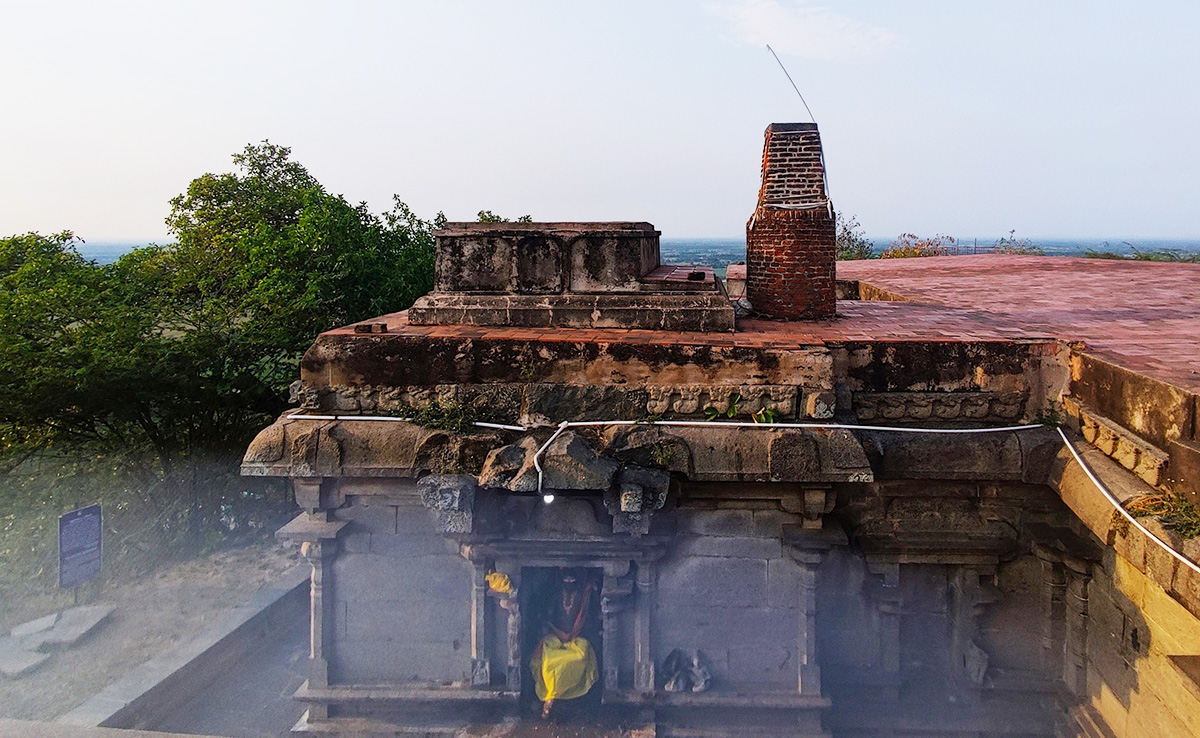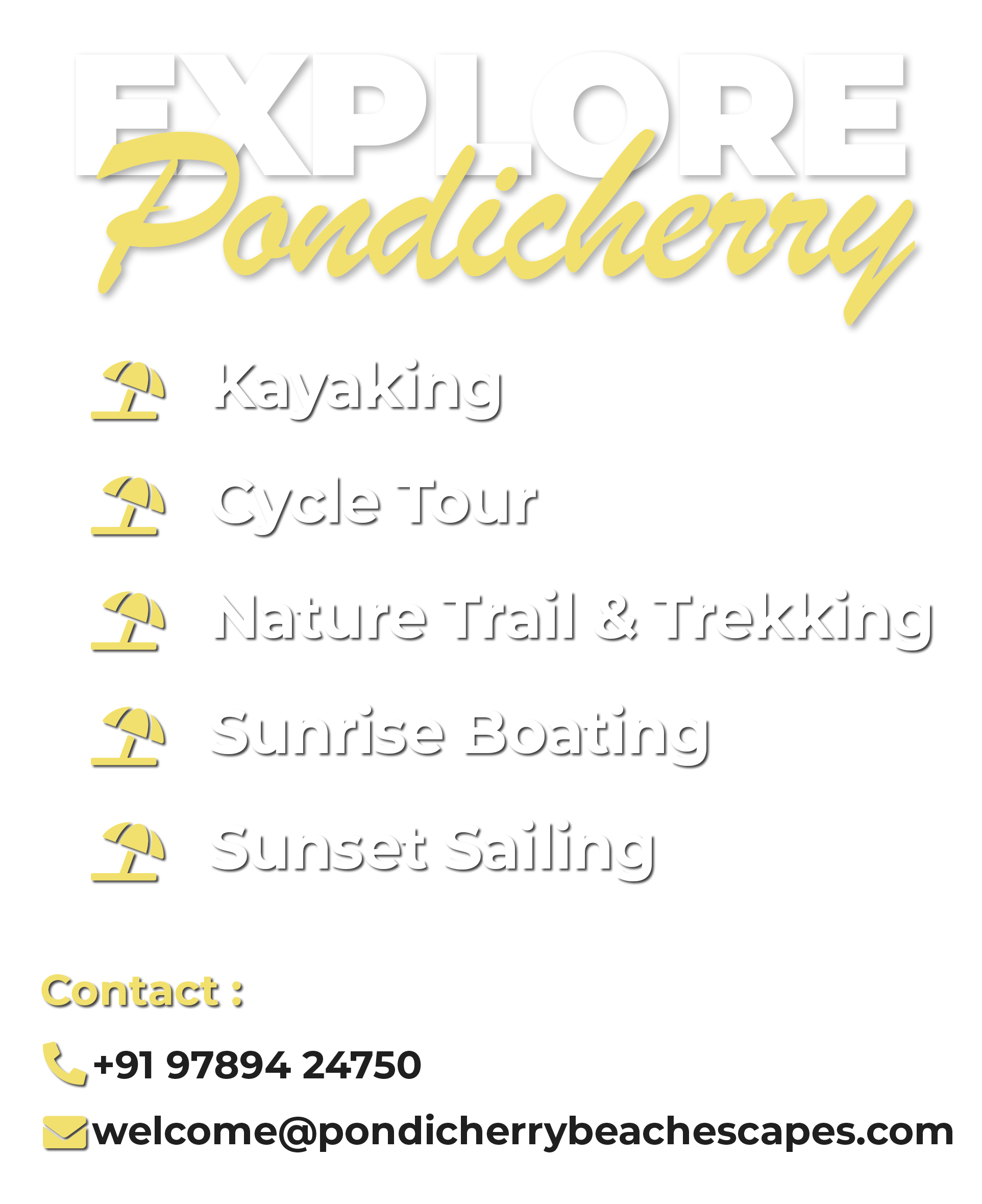A Bioregion is an area defined by its natural borders—clusters of ecological and geological features that nurture diverse species and sustain cultural traditions. These regions transcend political or administrative boundaries, uniting communities and landscapes through shared natural heritage.
 The Bioregion of Pondicherry
The Bioregion of Pondicherry
Concise Overview
- Key Areas: Pondicherry, Villupuram, Auroville, Cuddalore.
Extended Boundaries
- To the East: The Bay of Bengal, once known as the Chola Lake.
- To the West: The historic Gingee Fort and surrounding hillocks, extending up to Thiruvannamalai.
- To the North: The Kazhuveli wetlands, Marakkanam salt flats and sand dunes, and the Bunginham Canal—with its blend of brackish and freshwater, along with both old and new mangrove groves.
- To the South: Notable places such as Chidambaram, Pitchavaram, extending further to Kumbakonam and Tranquebar.
Historical contexts such as Nadu Naadu, Chola Nadu, and Thondai Nadu enrich the region’s past, emphasizing its cultural significance.
Why Take a Bioregion Tour?
A bioregion tour opens a window to the macro perspective of local geography, ecology, and cultural heritage. As you journey through these landscapes, you’ll gain firsthand insights into:
- Intricate Geographical Features: From vast wetlands to ancient fort ruins.
- Critical Biodiversity: Discover ecosystems that are home to critically endangered species and thriving wildlife communities.
- Cultural Ties: Appreciate how local traditions and community efforts—in agriculture, conservation, and heritage preservation—intertwine with nature.
By experiencing this microcosm of nature and history, you’ll understand why preserving these environments is essential for future generations.
In-Depth Highlights
1. Deep Dive: Kazhuvelli Wetlands
Kazhuvelli is the second-largest brackish water ecosystem in South India. Its dynamic tidal channels create a mosaic of habitats that sustain diverse flora and fauna. During migratory seasons it serves as a vital stopover and breeding ground for a variety of bird species, while also supporting vulnerable reptiles and native plant species. Historically renowned for salt extraction—and mentioned in ancient literature—the area now faces modern challenges such as overfishing and salt pan expansion. Conservation initiatives, including Ramsar designation and community-led restoration projects, are vital to safeguarding this unique ecosystem.
Key Facts at a Glance
| Parameter | Data |
| Location | Villupuram District, ~18 km north of Pondicherry, Tamil Nadu |
| Area | Approximately 47–52 km² (4,722–5,151.6 ha) |
| Ecosystem Type | Brackish water wetland with dynamic salinity zones |
| Key Flora | Native mangroves (Rhizophora, Avicennia), gum arabic tree, Jerusalem thorn |
| Key Fauna | Spot-billed pelican, herons, storks, egrets, raptors (imperial and spotted eagles), Indian flap-shelled turtle, Indian star tortoise |
| Human Interaction | Historical salt extraction; modern challenges include overfishing and salt pan expansion; active community-driven conservation initiatives are underway |
| Conservation | Designated as a Ramsar site; integrated within the National Wetland Conservation and Management Programme (NWCMP) |
2. The Micro-Biome & The Flying Fox
In a cluster of villages, residents honor both cultural traditions and ecological values. One striking example is the conservation of the Indian Fruit Bat (Flying Fox).
- The Scene at Dusk: As evening descends, these bats emerge from their tree roosts—hanging upside down in a mesmerizing display. They play a crucial role as seed dispersers and pollinators, maintaining the ecological balance.
- Community-Bat Coexistence: Local traditions—such as refraining from practices that disturb the bats (e.g., bursting crackers)—demonstrate a beautiful synergy between human life and nature.
3. Salt Pans
Ancient temple inscriptions dating back over a thousand years record the significance of salt trade in this region.
- Historical Significance:
- References in Sangam literature underline the long-standing importance of salt in local economies.
- Current Practices:
- Salt is produced in traditional “alam” setups, where the golden sun transforms black, clay soil and white heaps in a surreal natural display.
- Local salt workers labor under the harsh sun, continuing a legacy that connects the past and present.
4. Fort Ruins & Turtle Conservation
- Historical Port: Once an important port on the Coromandel Coast with active naval trade.
- Today:
- The area is now a vibrant fishing village where community-led initiatives emphasize turtle conservation through education and active protection.
- Mugal fort ruins stand as a testament to the turbulent history between the English and French during the Carnatic wars.
5. The Hillock of Perumukkal
- Geographical Setting: Just 40 km west of the coast, these Eastern Ghats pockets rise less than 500 feet above sea level.
- Historical Layers:
- Inscriptions and architecture reveal the influence of Pallava, Chola, and Vijayanagar kingdoms.
- Petroglyphs from neolithic times are documented by state archaeological departments.
- Community Resilience:
- Local residents have successfully protected this heritage site from quarrying, demonstrating strong community commitment to preservation.
6. Schools of Thought
The bioregion is a cradle of diverse spiritual and philosophical traditions. These include:
- Assevagam (Ājīvikam): An ancient deterministic sect emphasizing the cycles of fate and rebirth.
- Samanam (Jainism): A non-theistic tradition focused on non-violence, self-discipline, and liberation from karma.
- Saivam: The path that venerates Shiva as the formless cosmic principle beyond attributes.
- Vainavam: This tradition presents Vishnu as the compassionate, manifest form of Shiva, interacting with the world while acknowledging his transcendence.
Tour Itinerary & Practical Details
- Duration & Distance: Approximately 3.5 hours, covering 150 km (round-trip).
- Group Size: 12–15 participants, accompanied by 2 tour leaders and experts for interactive sessions.
- Departure: 5:30 AM from the SV Patel Salai & Gingee Salai junction (using a 17-seater vehicle).
- Meals & Snacks:
- Packed Breakfast: Sprouts, cut fruits, and sandwiches.
- Lunch: A variety of rice dishes, thokku, fryums, salad, pickles, and sweets (with options available at Perumukkal and Alamaparai).
- Essential Items to Bring: Caps, sunglasses, hydration packets, 2-liter water bottles, and personal snacks.
- Highlighted Episodes:
- Kazhuveli Wetlands
- Bat Village
- Marakkanam Salt Pans
- Alamaparai Fort & Turtle Conservation
- Perumukkal Hillock
- Visits to Munnur, Bramadesam, and Uppuvelur
Final Thoughts
This rich tapestry of natural beauty, historical significance, and cultural resilience makes the bioregion tour a deeply immersive experience. It not only educates but inspires a commitment to preserving these precious ecosystems and traditions for future generations.

